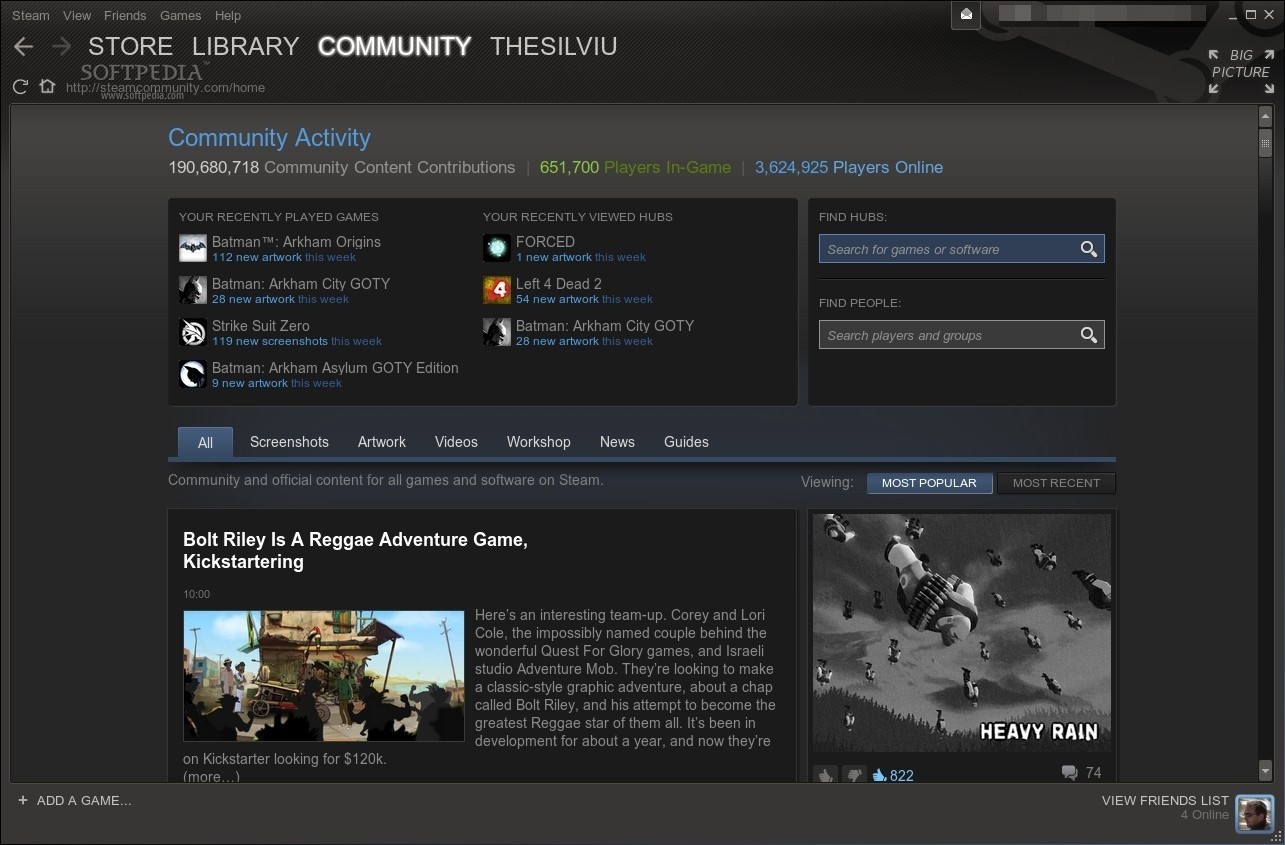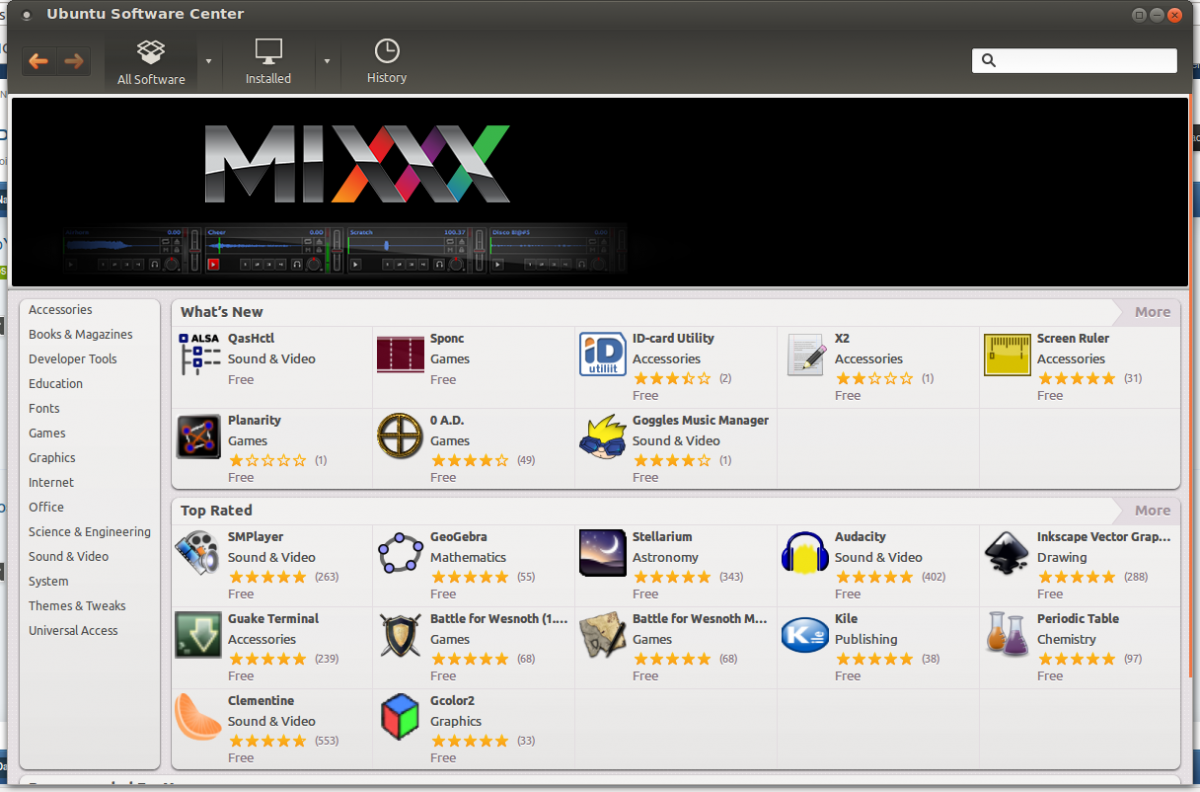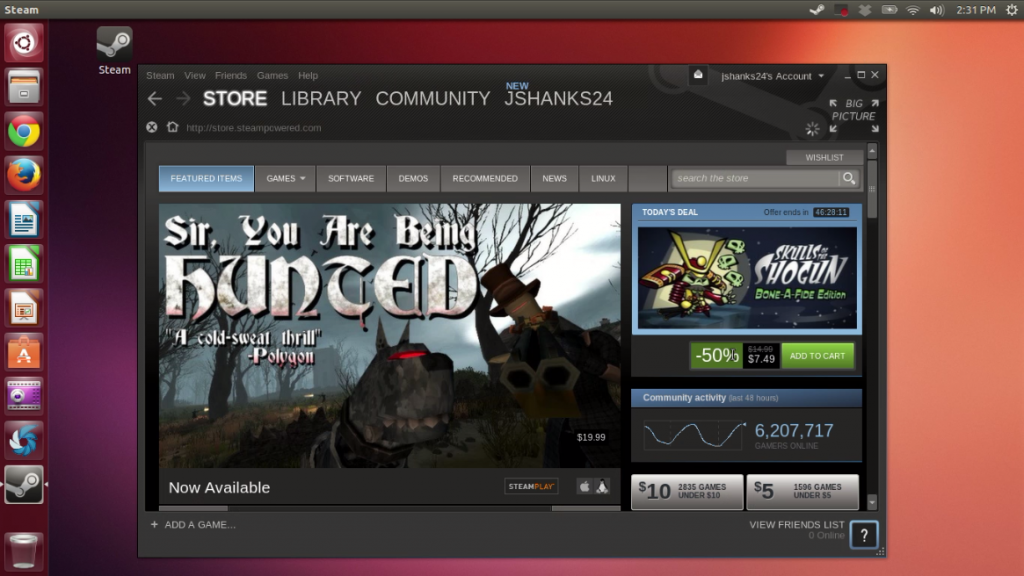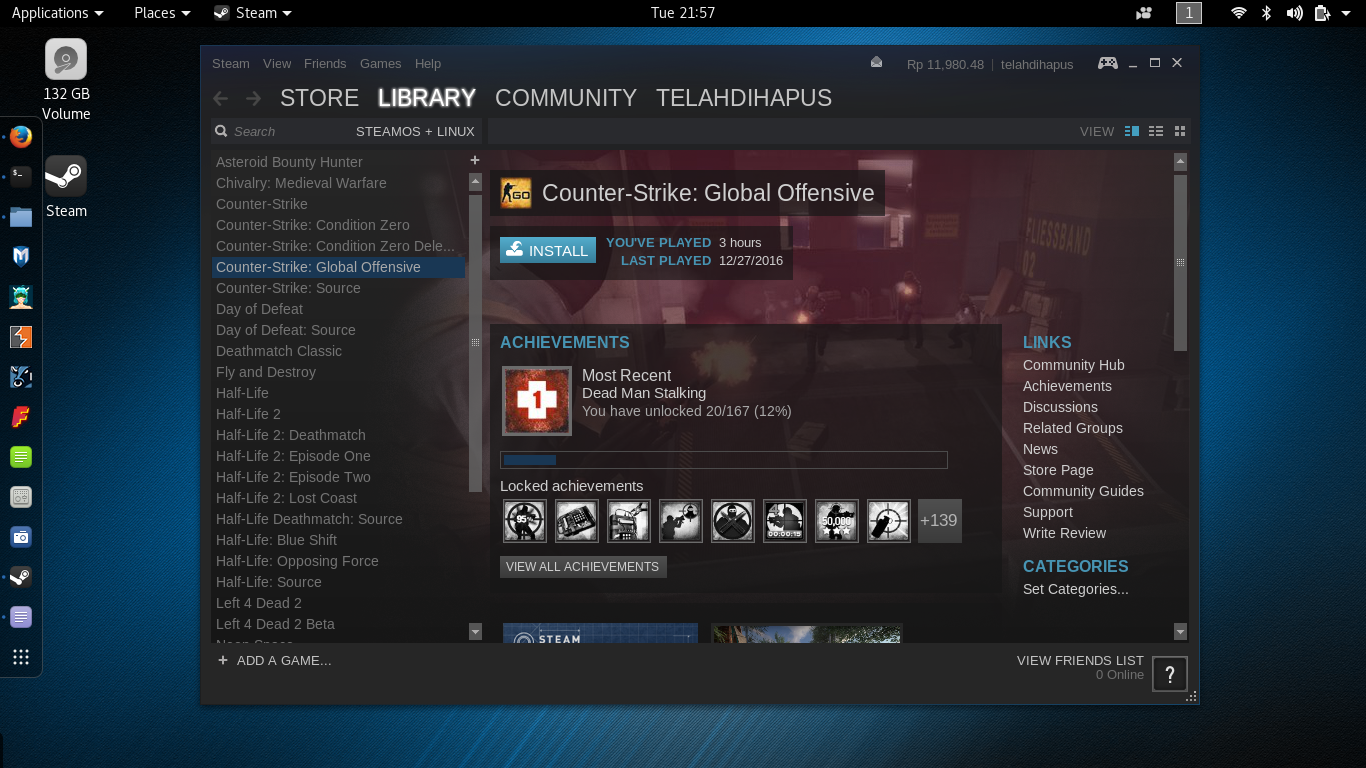

It also has a web API that allows you to play games on the web and supports a gamepad. Steam is written in Java, C++, and Objective-C programming languages. In this post, we will see how to install Steam on Linux. If you fail in one method, no worries, there are other methods as well. There are a few methods of installing Steam on the major Linux distributions. To play games on Linux, you no longer need Wine you just install Steam, and you’re good to go. Those who have used Wine must agree with it Wine definitely is a resource-hungry application. Probably Wine is the very first thing that popped into your head when you first thought about running games/ windows games on your Linux system. All the answers are about to end, only if you stay with the post till the end.

Well, how smooth and good Steam is on Linux? Can it utilize the GPU cores as Widows or Mac can? Do games buffer on Steam? If you are a newbie in Steam, a lot of questions are playing around your head. Even if you are not a gamer, you would not mind giving Steam a shot to check how it works on Linux. Steam had become available for Linux in 2013 since then, the popularity graph of Steam has been increasing. But with the development of Steam, you can now smoothly play games on Linux.

No wonder earlier gaming was a daydream on Linux distributions. While Ubuntu switched the default Firefox web browser to a Snap package last year, Linux Mint struck a deal with Mozilla to keep a non-Snap version available.If you are a gaming and Linux enthusiast, you have probably been pondering for a long time about how to play professional games in a Linux environment. Canonical controls the only Snap 'app store,' and Snap apps often take much longer to open than regular software. distros not based on Ubuntu or Arch), the technology behind Snap has been criticized by some in the Linux community. Even though there are some advantages to Snap packages, especially for desktop Linux systems with fewer traditional packages available (e.g. Snap is a containerized package system developed by Canonical, intended to make desktop Linux software easier to install, update, and use across different Linux distributions.

Steam and its games are sandboxed from the rest of the operating system, so games can't see all of your computer's files - similar to the new Steam container on Chrome OS. The new package contains Steam and all of its dependences in one download, without the extra steps that are sometimes required for Steam on Linux (like enabling 32-bit libraries or Mesa drivers). Steam and its games are sandboxed from the rest of the operating system


 0 kommentar(er)
0 kommentar(er)
